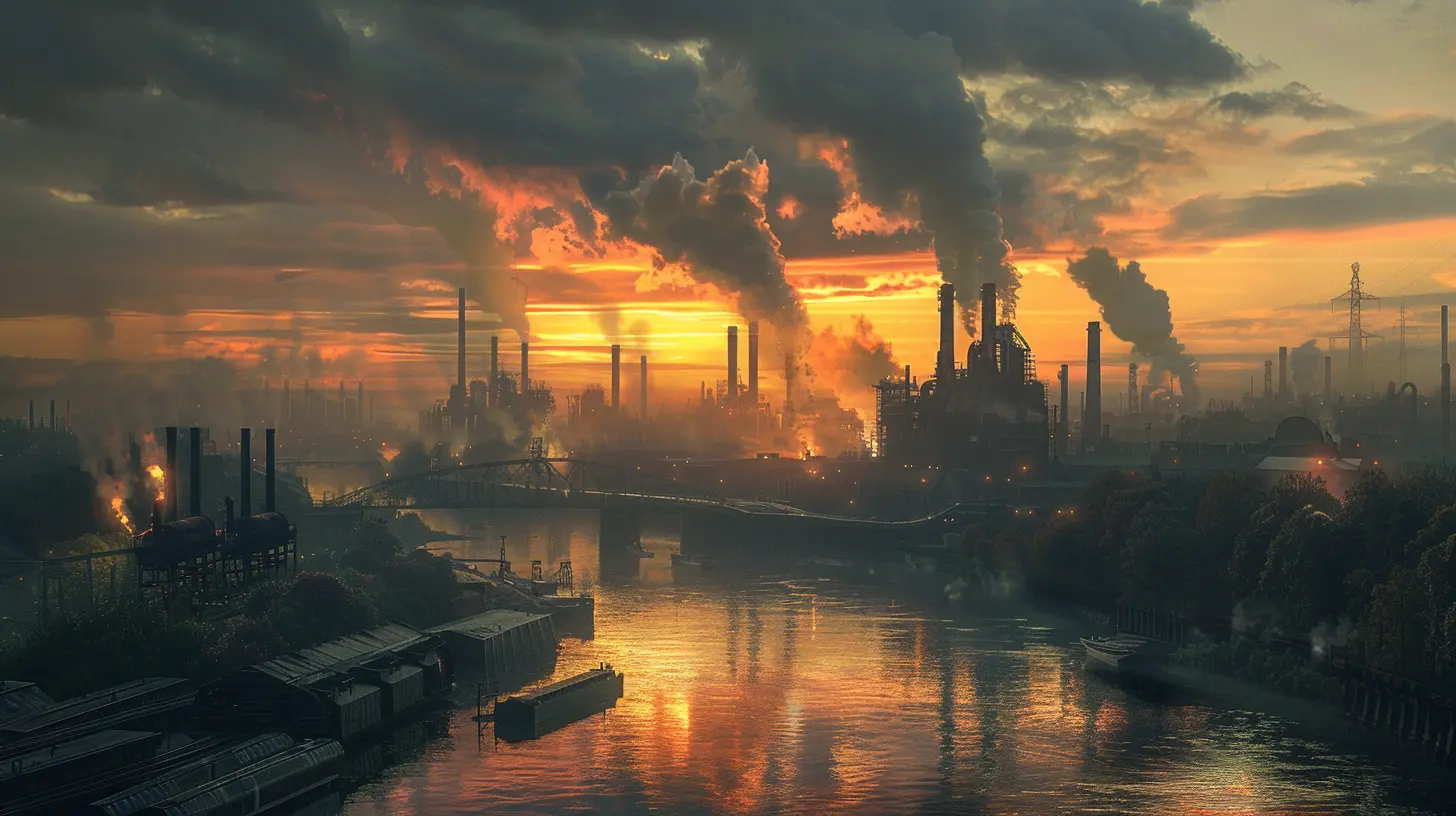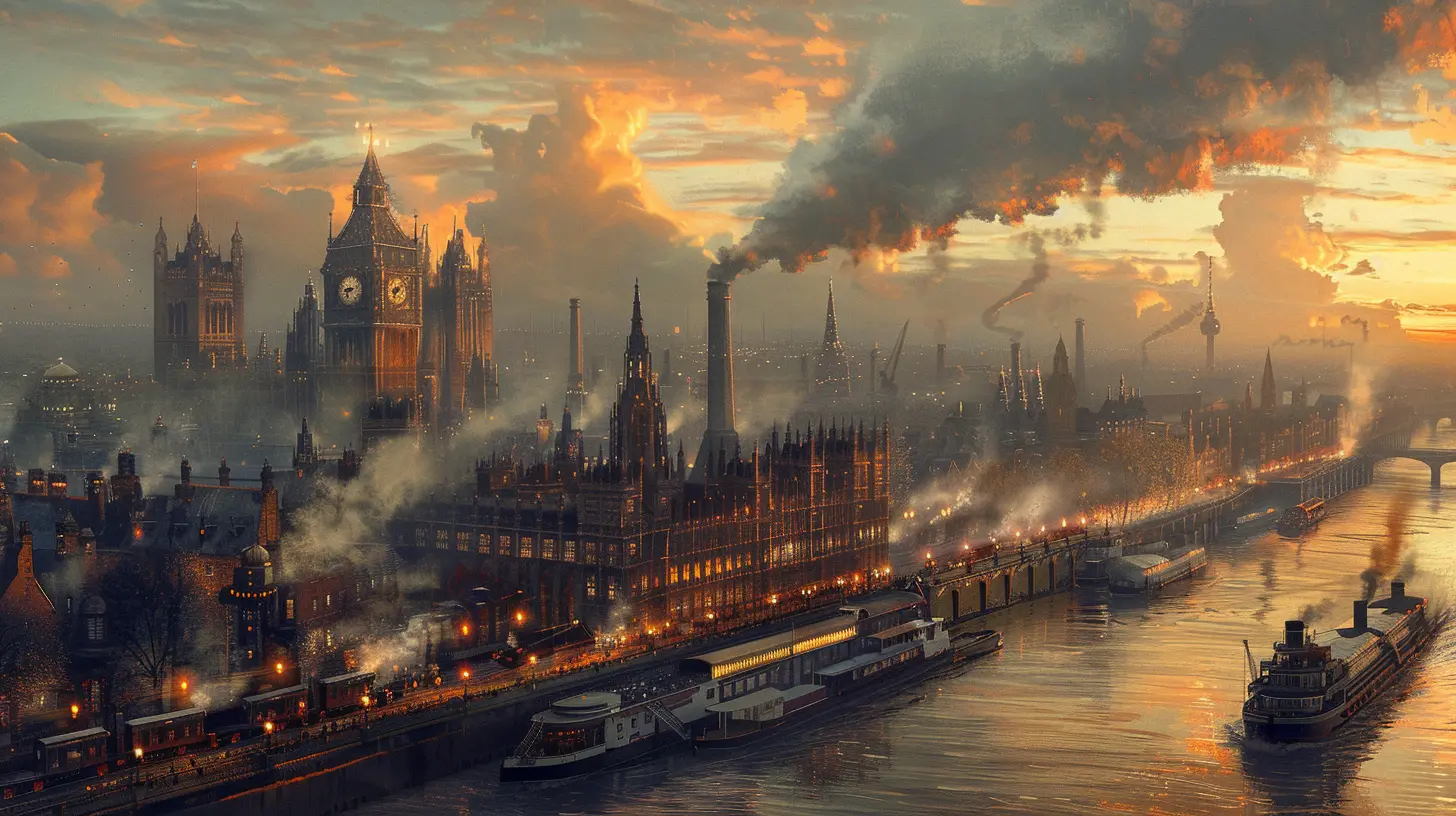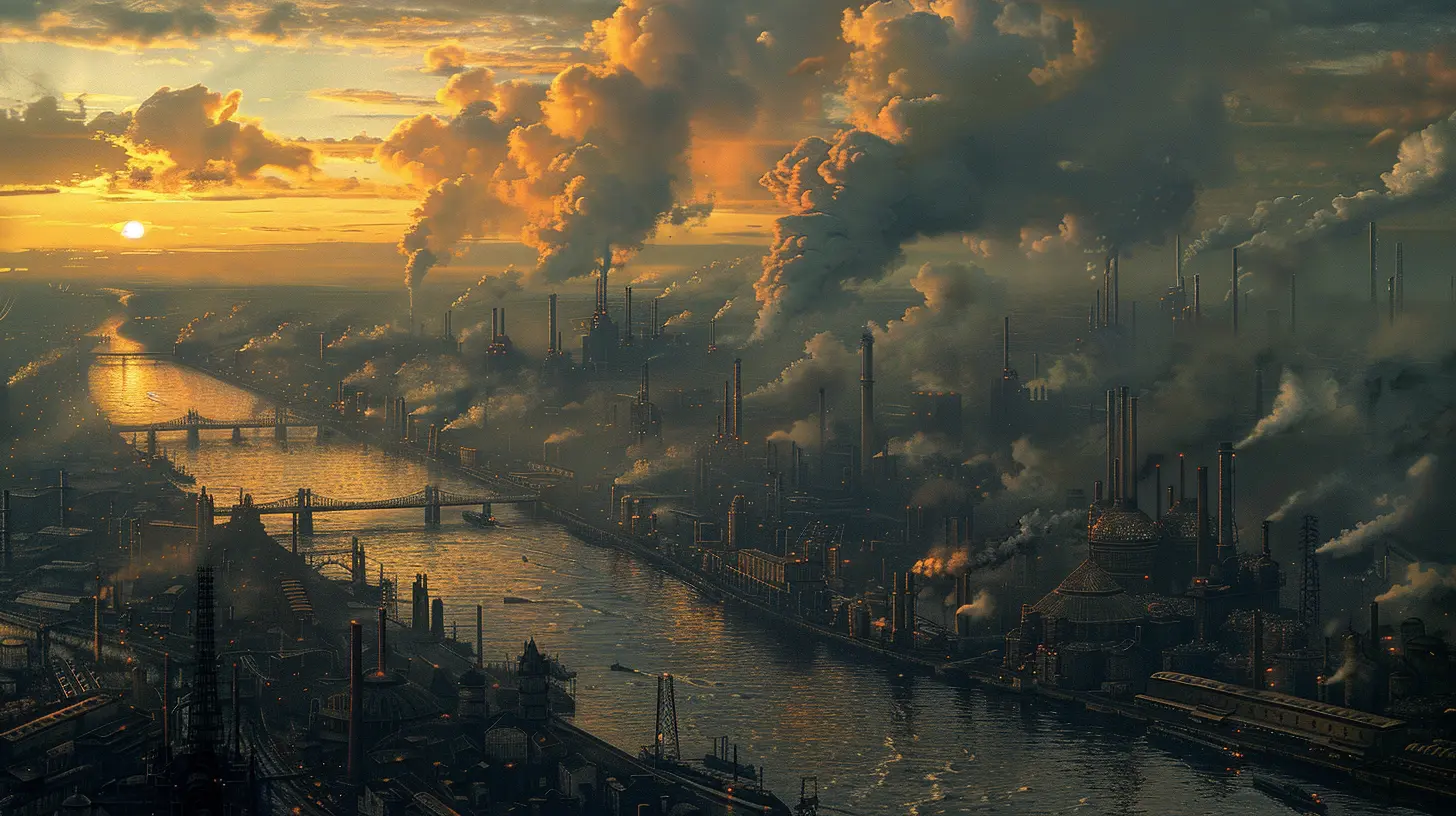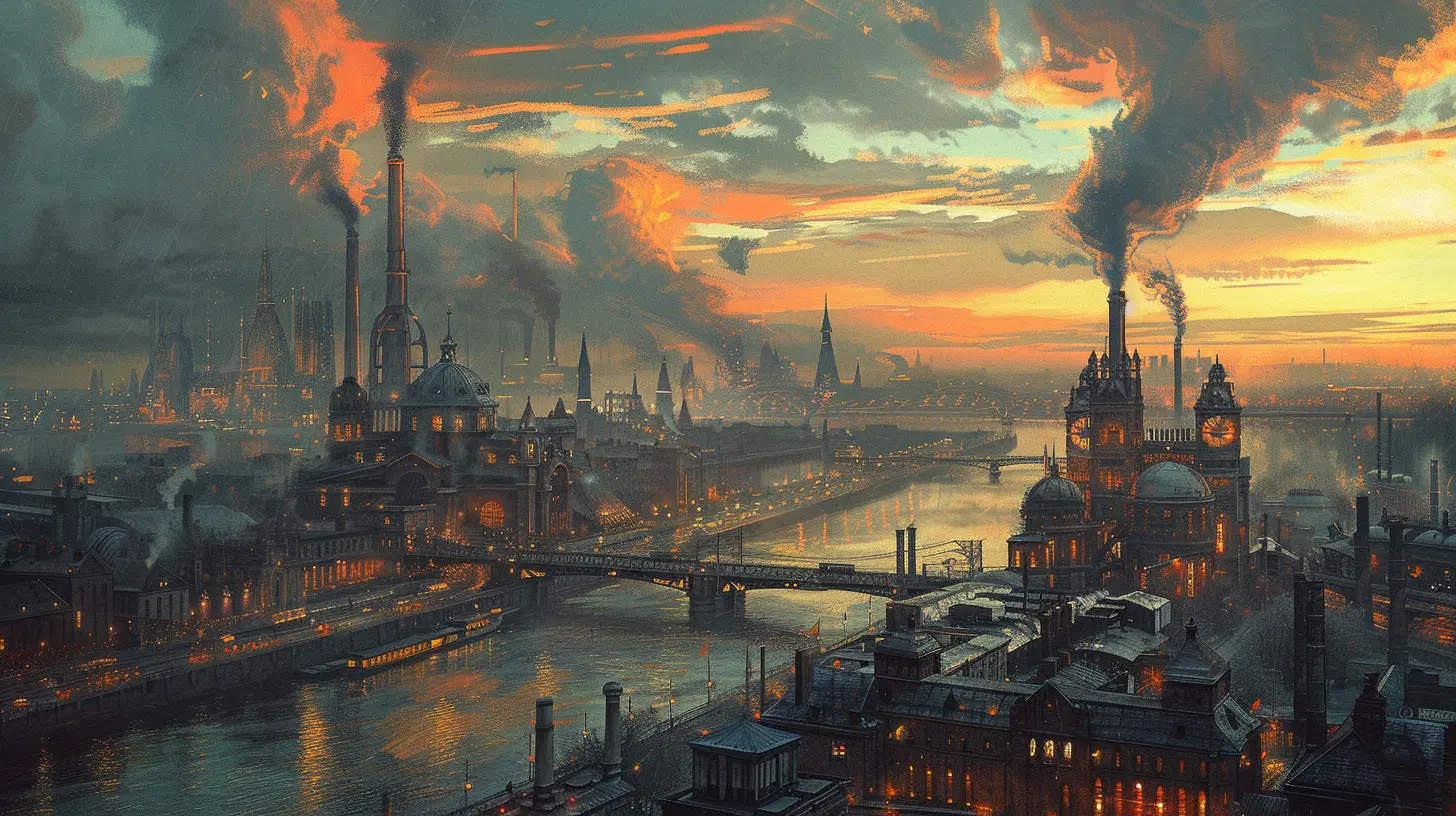The Industrial Revolution: Changing the Course of History
4 October 2025
Ever wondered how our modern world with fast cars, smartphones, factories, and city skylines came to be? Well, buckle up — because it all kicked off during one of the most game-changing periods in human history: the Industrial Revolution. This wasn’t just a minor tweak in how people worked or lived. Nope. This was an all-out transformation that flipped society on its head.
In this article, we’re going to walk through how the Industrial Revolution rewired the world, reshaped cities, revolutionized industries, and shifted the balance of power across the globe. Whether you’re a student, educator, or just curious how we went from hand tools to factory floors, this journey is definitely worth your time.
What Exactly Was the Industrial Revolution?
Let’s get clear from the start — the Industrial Revolution wasn’t a single event or a one-day affair. It was a period of massive change that began in the late 1700s and continued into the 1800s. Picture a world where everything was handmade — clothes, tools, even shoes. Then suddenly, boom! Machines take over.At its core, the Industrial Revolution was about transitioning from manual labor to machine-based manufacturing. It started in Britain (yes, the rainy island), spread like wildfire across Europe, and then hopped the Atlantic to North America, eventually impacting nearly every corner of the globe.
A New Era: From Fields to Factories
Before this revolution, most people lived in rural areas and worked on farms. Life was slow, predictable, and heavily dependent on sunlight and seasons. But then came the factory — and with it, a whole new rhythm.Instead of working in fields, people flooded into cities to find jobs in metallurgy, textiles, and other booming industries. It was like the original “big city dream,” only now, it came with smokestacks instead of skyscrapers.
Why Was Britain the Starting Line?
Great question! Britain had a few aces up its sleeve:- Coal and iron: Perfect for fueling factories.
- A stable government: Investors weren’t scared of political chaos.
- Colonial markets: They had places all over the world to sell their goods.
- Innovative spirit: British inventors were constantly coming up with new gadgets and gizmos.
All these ingredients created the perfect storm for industrial magic.
The Brilliant Minds Behind the Machines
This era wasn’t just powered by fuel and factories — it was also driven by genius. Some names you’ll definitely want to remember:- James Watt – He didn’t invent the steam engine, but he perfected it. His version became the beating heart of industry.
- Richard Arkwright – Known as the “father of the factory system,” his water frame revolutionized textile manufacturing.
- George Stephenson – The guy who made railways a big deal. Think of him as the Elon Musk of steam-powered locomotion.
These inventors weren’t working in isolation. It was like an innovation domino effect — one breakthrough would spark three more.
Technology That Changed Everything
Let’s get into the nitty-gritty. What were the actual inventions that flipped the script?The Steam Engine
Without steam, the Industrial Revolution wouldn’t have puffed along at full speed. Steam engines powered trains, ships, and even factories. They allowed goods and people to move faster than ever before. Imagine being stuck walking everywhere your whole life — then suddenly, you’re riding a train at 30 mph. Mind-blowing.The Spinning Jenny & Power Loom
Textile production exploded thanks to these machines. The Spinning Jenny allowed one worker to do the job of eight! The Power Loom automated weaving like never before. Clothes became cheaper and more accessible. Fashion, as we know it, got its first turbo boost.The Telegraph
Communication finally caught up with mobility. The telegraph let people send messages over long distances in real-time. It’s kind of like the 19th-century version of texting — just slower and with way more wires.Urban Life: The Good, The Bad, and The Gritty
Cities boomed, but not everything was sunshine and productivity. Industrial urban life was a mixed bag, to say the least.The Good
- Jobs: Factories created thousands of them.- Opportunities: Cities became hubs of art, science, and business.
- Innovation: New technologies kept improving life — eventually.
The Not-So-Good
- Overcrowding: Everyone moved to the cities, but the cities weren’t ready.- Pollution: Picture thick smog and rivers filled with factory waste.
- Child labor: Yep, kids had 12-hour shifts in dangerous conditions.
Urban life was exciting, but it came at a cost. It was like living in a snow globe — busy, loud, and always buzzing, but sometimes suffocating.
Impact on Society: Everything Changed
The Industrial Revolution didn’t just mess with machines — it rewired society itself.Women in the Workforce
Women took on jobs in textile mills and factories. For many, it was their first experience earning their own money. It wasn’t always empowering — the work was hard, and the pay was low — but it was a start.The Rise of the Middle Class
For the first time, there was a group that wasn’t rich like the lords or poor like the peasants. Business owners, merchants, and skilled workers climbed the social ladder, changing class dynamics forever.Education and Literacy
Mass production didn’t just apply to shoes and shirts — books, newspapers, and pamphlets became more accessible. Literacy rates climbed as more people wanted to read, write, and take part in this brave new world.Global Ripples: The Industrial Domino Effect
Once Britain started, the rest of the world followed suit.America Joins the Race
By the mid-1800s, the U.S. surged into the industrial scene. Think steel factories, oil tycoons, and the birth of big business. Cities like Chicago and New York exploded with growth.The World Gets Smaller
Steamships and trains meant global trade was now faster and broader. Goods could be bought and sold across oceans. The phrase “it's a small world” began to make sense — at least economically.The Dark Side: Colonialism and Inequality
But, let’s not sugarcoat it. The Industrial Revolution had its shadows.Fueling Colonialism
European powers needed raw materials, and they weren’t afraid to take them—by force if needed. This meant expanding empires, often at the expense of indigenous communities. The Industrial Revolution provided the tech to conquer, extract, and exploit — and many parts of the world are still dealing with the aftermath.Economic Inequality
While some became fabulously wealthy, factory workers — the backbone of the revolution — often lived in poverty. Long hours, low wages, and dangerous conditions were the norm. That’s one reason why labor unions and social reform movements eventually got so big.Long-Term Legacy: Why It Still Matters Today
The Industrial Revolution didn’t just transform its century. It laid the groundwork for the modern world.Birth of Capitalism
Mass production, private ownership, and competitive markets — sound familiar? The economic systems that rule today trace their roots back to this time.Climate Change Origins
Unfortunately, fossil fuels were the backbone of industrial growth. That means many of today’s environmental challenges, including global warming, have their roots in this era.The Tech Revolution’s Granddad
Think of the Industrial Revolution as the great-grandparent of Silicon Valley. It introduced the idea of constant innovation, faster workflows, and the reshaping of society through technology. Sound familiar? That’s because we’re kind of living in a second Industrial Revolution — just digital this time.Final Thoughts: A Revolution That Never Really Ended
So, what’s the big takeaway? The Industrial Revolution wasn’t just a chapter in a history book — it’s the opening act of the world we live in today. From smartphones to supermarkets, from commutes to communication, it all echoes back to those first clanking machines and smoking chimneys.It was messy, it was thrilling, it was unfair, and it was groundbreaking. But most of all, it changed everything.
And the wild part? We’re still feeling its ripple effects — in every factory, every city, and every click of your mouse.
all images in this post were generated using AI tools
Category:
History LessonsAuthor:

Zoe McKay
Discussion
rate this article
1 comments
Roman Palmer
While the Industrial Revolution undeniably transformed economies and societies, it's crucial to acknowledge the accompanying social upheaval and environmental degradation. The article highlights technological advancements, yet a deeper analysis of the human cost and the long-term impacts on labor and ecology would provide a more nuanced understanding of this pivotal era in history.
October 17, 2025 at 4:41 AM

Zoe McKay
Absolutely, your point is well taken. Acknowledging both the advancements and the significant social and environmental challenges is essential for a comprehensive understanding of the Industrial Revolution's legacy. Thank you for your insightful comment!


